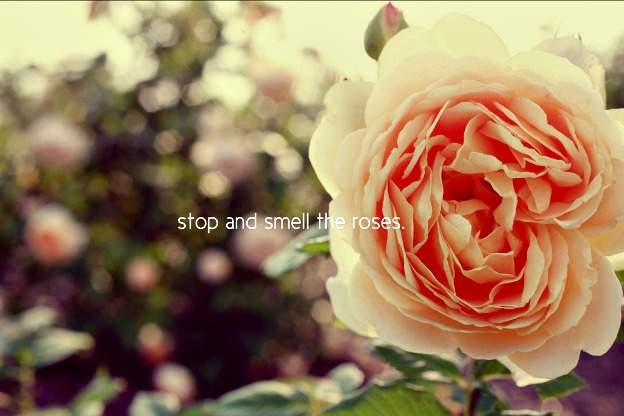
Roses are red, violets are blue…and this week on Harmonia, we invite you to go tripping through the tulips with us as we bring you a program of early music with texts inspired by both romantic and symbolic associations with flowers. Later in the program we'll feature Anonymous 4's recent recording, 1865: Songs of Hope and Home from the American Civil War.
Let's start with two songs-the anonymous "Flos regalis" and Clemens non Papa's "Au ioly bocquet croist la violette,"-from the 2005 recording The Rose, the Lily & the Whortleberry: Medieval and Renaissance Gardens in Music, performed by the Orlando Consort.
Song of Songs
"Shall I compare thee to a summer's day?" begins one of Shakespeare's most famous sonnets. However, Shakespeare was by no means the first to invite comparison between the blooming flowers of the garden and the modest blush of a lover's cheek.
16th-century Flemish composer Nicolas Gombert, who died four years before Shakespeare was born, frequently set texts featuring extensive allusions to the garden, as did many of his contemporaries.
Let's hear Gombert's motet "O flos campi," followed by 15th-century English composer Leonel Power's motet "Quam pulchra es." Both works use text from the Song of Songs.
Daisy, amaryllis, and rose
"What's in a name?" Juliet asks, in an oft-quoted scene from Shakespeare's Romeo and Juliet. She continues, "That which we call a rose by any other name would smell as sweet."
That scene has become one of the most famous in theatrical history. But once again, Shakespeare wasn't the first to compare one's lover to a fragrant flower. That began many centuries earlier.
The chanson "N'a pas longtemps que trouvay Zephirus," from the late 14th century, tells the tale of Zephirus who, though he ponders the virtues of all the other more noble flowers such as the rose, ultimately settles on the "pleasant and lovely daisy" as the flower that pleases him most in his heart.
It was never all about the roses, anyway! The famous madrigal "Amarilli, mia bella," by the early Italian baroque composer Giulio Caccini, is a tribute to the lovely Amaryllis. If ever she should doubt his love, the poet entreats that she should "open my breast and see written on my heart, Amaryllis is my beloved."
Let's hear soprano Catherine Webster with The Catacoustic Consort perform the original version of this song, which comes from Caccini's Le nuove musiche, a collection of songs with basso continuo. Then we'll hear a variation on the madrigal performed by Nancy Hadden on the Renaissance flute and Jacob Heringman on the lute.
Hildegard
Religious floral imagery appears extensively in the works of Hildegard von Bingen, a Benedictine nun who was born in 1098 in a small town that falls within the borders of modern-day Germany.
From a time in history when women achieved very little notoriety, Hildegard was exceptional; she was a Benedictine abbess, visionary, writer, philosopher, and composer whose surviving works include poetry, medical and scientific treatises, recorded visions, letters, and monophonic music.
1865: Songs of Hope and Home from the American Civil War
On our featured release, we travel back to 1865 with the acclaimedearly music ensemble Anonymous 4 and special guest Bruce Molsky.
Anonymous 4's 2015 recording entitled 1865: Songs of Hope and Home from the American Civil War, features 18 tracks that run the gamut from classic hymns to rousing fiddle tunes. And, of course, where would we be without a maiden in a garden?
Break and theme music
:30, Saints and Sinners: The Music of Medieval and Renaissance Europe, [Compilation with various performers], Naxos (501067) 2014 B00HFDKT24, Robert Parsons: D. 5, T. 8 –The song called trumpets (Rose Consort of Viols) (excerpt of 2:09)
:60, Saints and Sinners: The Music of Medieval and Renaissance Europe, [Compilation with various performers], Naxos (501067) 2014 B00HFDKT24, John Johnson: D. 6, T. 5 -The marigold pavan (Christopher Wilson, lute) (excerpt of 4:12)
:30, Saints and Sinners: The Music of Medieval and Renaissance Europe, [Compilation with various performers], Naxos (501067) 2014 B00HFDKT24, Lorenzo del Liuto: D. 7, T. 11 – Prelude (Marco Pesci, lute) (excerpt of :51)
Theme:Â Danse Royale, Ensemble Alcatraz, Elektra Nonesuch 79240-2 1992 B000005J0B, T.12: La Prime Estampie Royal
The writer for this edition of Harmonia is Elizabeth Clark.
Learn more about recent early music CDs on the Harmonia Early Music Podcast. You can subscribe on iTunes or at harmonia early music dot org.









